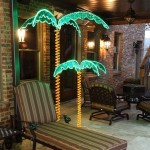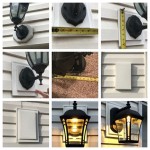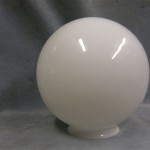How to Make an Outdoor Projector Screen
Enjoying movies under the stars is a captivating experience. An outdoor projector screen allows you to transform your backyard into a cinematic haven. However, purchasing a dedicated screen can be expensive. Fortunately, creating your own projector screen is a DIY project within reach for most homeowners, offering cost-effective customization tailored to your needs and preferences.
Choosing the Right Material
Selecting the appropriate material is crucial for achieving an optimal viewing experience. The ideal material should be smooth, opaque, and capable of reflecting light evenly. Here are some popular options:
- White Canvas Drop Cloth: This readily available option is budget-friendly and offers a generally acceptable projection surface. However, it might not be as smooth or evenly reflective as specialty materials.
- Projector Screen Fabric: Designed specifically for projectors, these fabrics are available in various materials like matte white vinyl or woven polyester. They provide excellent reflectivity and evenness, minimizing light distortion and enhancing image quality.
- White Bed Sheet: A readily available household item, a white bed sheet can serve as a temporary screen. However, its uneven surface and potential for wrinkles can negatively impact the image quality.
- Foam Board: This readily available material offers a smooth and opaque surface, making it an affordable alternative. However, it is not as durable as other options.
Consider the size of your projected image and your budget when making your material selection. For larger screens, a canvas drop cloth or projector screen fabric may be more cost-effective than several smaller foam boards.
Building the Frame
Once you have chosen your material, you need to build a frame to support it. This frame should be sturdy and capable of withstanding the weight of the material. The construction method depends on the chosen material and your desired screen size. Here are some common methods:
Wooden Frame Construction:
A wooden frame provides a robust and readily customizable foundation. Use 1x2 or 2x4 lumber, depending on the screen size and desired stability. Cut the wood to size and assemble it using wood glue and screws. Ensure the corners are square and the frame is level.
PVC Pipe Frame Construction:
PVC pipe frames are lightweight, portable, and budget-friendly. Cut the PVC pipe to size using a saw designed for PVC. Connect the pieces using PVC pipe connectors, creating a rectangular frame. This method excels in portability, allowing for convenient storage and setup.
Tension Screen Frame:
This method involves stretching the material taut over a frame, minimizing wrinkles and maximizing image quality. Use a tension screen frame kit, readily available online or at hardware stores. These kits often incorporate spring-loaded mechanisms for easy tension adjustments. This option is ideal for larger screens requiring a smooth and consistent surface.
Mounting and Installation
The mounting method depends on your chosen frame and desired screen size. Small screens can be mounted using hooks, nails, or zip ties attached to a wall or fence. Larger screens may necessitate more robust solutions like a freestanding tripod, adjustable stand, or wall-mounted brackets.
Consider the following factors:
- Light Pollution: Position the screen where it is shielded from sources of glare, such as streetlights or house lights.
- Projection Distance: Ensure the distance between the projector and the screen allows for optimal image size and focus. Consult your projector's manual for recommended distances.
- Viewing Angle: Position the screen for comfortable viewing from various angles. Consider the seating arrangement and adjust the screen's height accordingly.
Once you have selected the mounting method, secure the frame and screen to your chosen location. Ensure everything is stable and secure before projecting any images.
Additional Tips:
To enhance your outdoor projector screen experience, here are some additional tips:
- Use a Projector with High Brightness: Outdoor screens require projectors capable of producing bright images to combat ambient light.
- Darken the Viewing Area: Minimize light pollution by using curtains, blinds, or other light-blocking measures to enhance image contrast.
- Consider a Screen Cover: Protect your screen from weather elements and dust by using a waterproof cover when not in use.
Making an outdoor projector screen is a rewarding DIY project that enhances your outdoor entertainment options. With creative planning and careful execution, you can enjoy movie nights under the stars in the comfort of your backyard.

How To Make A Diy Outdoor Screen One Handy Momma

Diy Outdoor Screen Real Mom Kitchen Steppin Out Of My

How To Make An Easy Outdoor Screen

How To Make An Easy Diy Outdoor Screen

How To Build An Outdoor Theater At Home The Horticult

Home Projection Screens Material For Outdoor Projector Screen Diy

How To Build An Outdoor Screen My Frugal Adventures

11 Diy Backyard Screen Ideas For Your Outdoor Theater

120 Projector Screen With Pvc Frame Diy Outdoor

15 Diy Projector Screen Ideas For Your Home Theater The Self Sufficient Living







